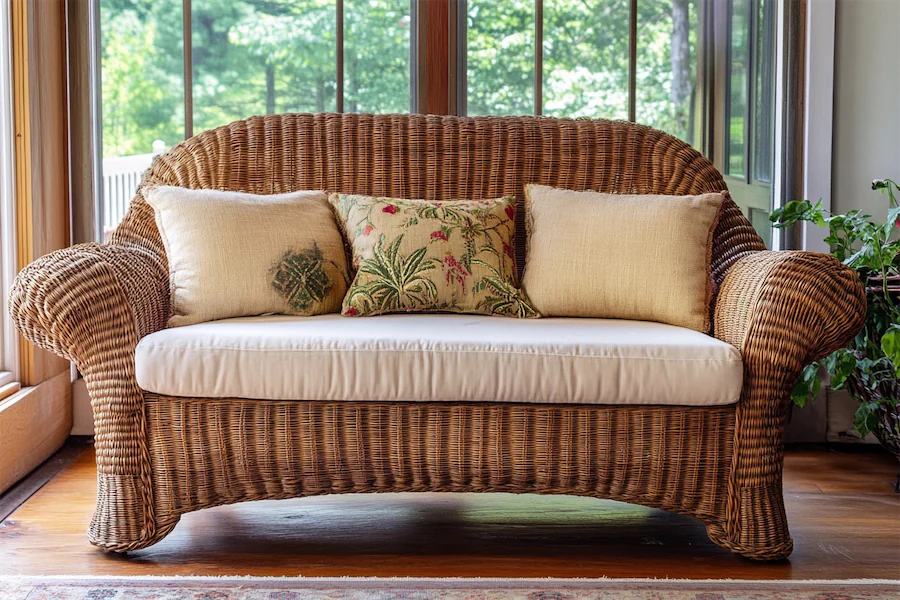Wicker sofas, renowned for their intricate weaving and natural appeal, have been cherished in interior and exterior design for millennia. This article explores their history, key features, applications, selection considerations, and enduring charm in contemporary settings.
Introduction to Wicker Sofas
A wicker sofa is crafted through the technique of weaving pliable materials—traditionally natural fibers like rattan, willow, or bamboo—over a sturdy frame to create a durable and aesthetically pleasing seating option. Modern wicker furniture often incorporates synthetic fibers, enhancing durability and weather resistance, especially for outdoor use.
History and Origins of Wicker Sofas
The art of wicker weaving dates back nearly 5,000 years, with origins in ancient Egypt, where reeds and swamp grasses were fashioned into furniture and household items. This craft spread through ancient Rome and into Europe, eventually reaching the Americas. In the 19th century, wicker furniture gained popularity in Victorian England and the United States, symbolizing elegance and comfort. The Victorian era, in particular, saw wicker furniture as a cleaner alternative to upholstered pieces, suitable for both indoor and outdoor use.
Key Features of Wicker Sofas
Wicker sofas are distinguished by several hallmark characteristics:
- Weaving Technique: The intricate interlacing of materials results in a flexible yet sturdy structure.
- Materials: Traditional wicker utilizes natural fibers like rattan, willow, and bamboo, while contemporary versions may use synthetic materials for enhanced durability.
- Lightweight and Durable: The construction yields furniture that is easy to move yet robust enough to withstand regular use.
- Aesthetic Appeal: The natural look and texture of wicker add a touch of warmth and elegance to various décor styles.
Applications of Wicker Sofas
In interior and exterior design, wicker sofas serve multiple roles:
- Outdoor Seating: Ideal for patios, gardens, and sunrooms due to their airy design and suitability for warm climates.
- Indoor Accents: Complementary in living rooms or conservatories, especially in bohemian, coastal, or rustic-themed interiors.
- Versatility: Available in various styles and sizes, making them adaptable to different spaces and design preferences.
Considerations When Choosing a Wicker Sofa
Selecting the appropriate wicker sofa involves several factors:
- Material Quality: Decide between natural fibers, which offer traditional appeal, and synthetic options that provide increased durability and weather resistance.
- Construction: Ensure the frame is sturdy, commonly made from materials like aluminum or hardwood, to support the woven exterior.
- Comfort: Look for sofas with quality cushions and ergonomic designs to enhance seating comfort.
- Maintenance: Consider the care requirements; synthetic wicker typically requires less maintenance compared to natural fibers.
- Environmental Exposure: For outdoor use, select materials and finishes that can withstand local weather conditions to prolong the sofa’s lifespan.
Conclusion
Wicker sofas seamlessly blend functionality with timeless aesthetic appeal, making them a versatile choice for both indoor and outdoor settings. Their rich history and adaptability to various design styles ensure that wicker sofas remain a beloved element in furnishing spaces, offering comfort and elegance that transcend trends.
